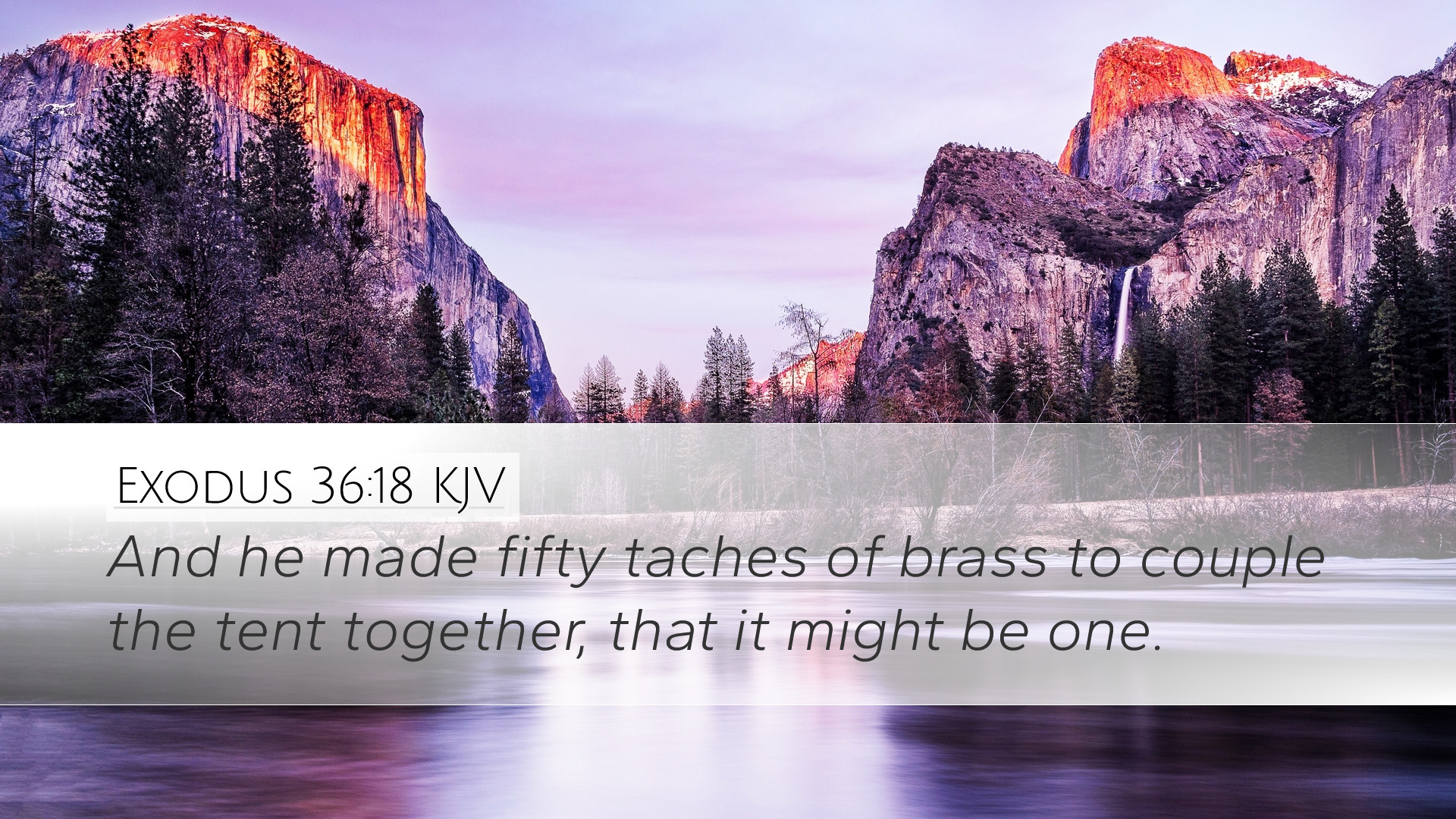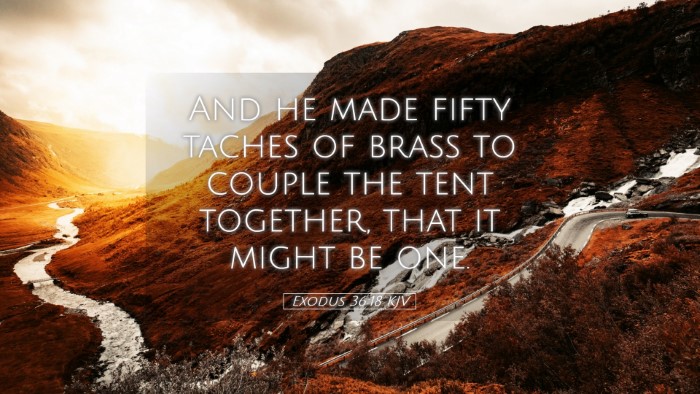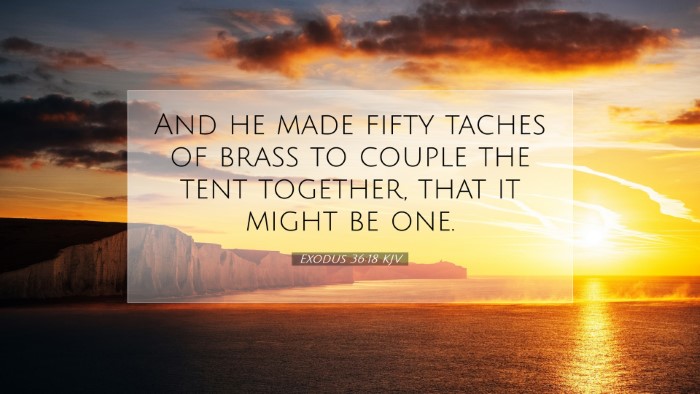Exodus 36:18 - Bible Commentary
Verse: Exodus 36:18: "And he made two cherubim of gold; beaten out of one piece made he them, on the two ends of the mercy seat."
Introduction
This commentary examines Exodus 36:18 within the broader context of the construction of the Tabernacle, reflecting on theological implications, artistic significance, and historical context. By integrating insights from public domain commentaries, it aims to provide meaningful reflections for pastors, students, theologians, and Bible scholars.
The Significance of the Cherubim
Matthew Henry’s Commentary: Henry emphasizes the importance of the cherubim as heavenly beings, representing the presence of God. They were not mere decorations but served as a symbolic representation of God’s throne on earth. The use of gold points to the divine nature of the heavenly realm.
Albert Barnes’ Notes: Barnes highlights that cherubim guard the holiness of God, serving as protectors of the mercy seat. Their presence signifies the intersection of heaven and earth, where God's mercy is available to humankind. The cherubim’s creation from one piece of gold suggests unity and the inseparability of God’s attributes of justice and mercy.
Adam Clarke’s Commentary: Clarke elaborates on the craftsmanship involved in the making of the cherubim. He notes that the term "beaten out of one piece" signifies skill and intricacy, much like God's creation in the universe. Clarke also suggests that this meticulous work symbolizes the need for unity in the worship of God.
Theological Reflections
The cherubim in Exodus 36:18 are significant for several theological reasons:
- Representation of Divine Presence: They embody God's presence, suggesting that worship should always recognize the holiness and majesty of God.
- Unity of God’s Attributes: The cherubim, formed from a single piece of gold, illustrate how justice and mercy coexist harmoniously in the character of God.
- Invitation to Communion: Their position over the mercy seat reflects God’s desire for relationship with His people—offering mercy while guarding His holiness.
Historical and Cultural Context
The construction of the Tabernacle and its furnishings, including the cherubim, must be understood within the cultural context of ancient Israel. It reflects the cultural practices and beliefs of the time regarding the divine:
- Artistry in Worship: The intricate craftsmanship required for creating the cherubim signifies the Israelite commitment to excellence in worship. This mirrors other ancient Near Eastern practices where artistry has profound spiritual significance.
- The Role of Art in Theology: The cherubim served not only as artistic representations but also as theological statements about God's nature, inviting worshipers to reflect on their approach to God.
- Protection and Proximity: The presence of cherubim also aligns with the understanding of divine beings as protectors, drawing parallels with other Ancient Near Eastern texts that highlight themes of divine guardianship.
Practical Implications for Worship
The lesson from Exodus 36:18 extends into modern worship practices:
- Worship as a Holy Encounter: Understanding that worship approaches a holy God, believers should engage in practices that reflect reverence and awe. The cherubim remind worshipers that God is both accessible and righteous.
- Artistic Expression in Worship: The inclusion of artistic elements in worship spaces can enhance the collective experience of encountering God’s presence.
- The Balance of Mercy and Justice: Churches are encouraged to reflect on how their theology embodies both God’s justice and mercy, addressing the holistic nature of God’s character in their teachings.
Conclusion
Exodus 36:18, while a specific instance in the construction narrative, opens a broader discussion on God's presence, the nature of worship, and the artistry inherent in it. Cherubim are not merely ornamental; they are deeply theological, urging believers to cultivate a profound respect for God and His holiness while embracing the mercy He offers. Through a synthesized perspective from respected commentaries, scholars and practitioners can glean critical insights that shape both understanding and practice in contemporary worship.


